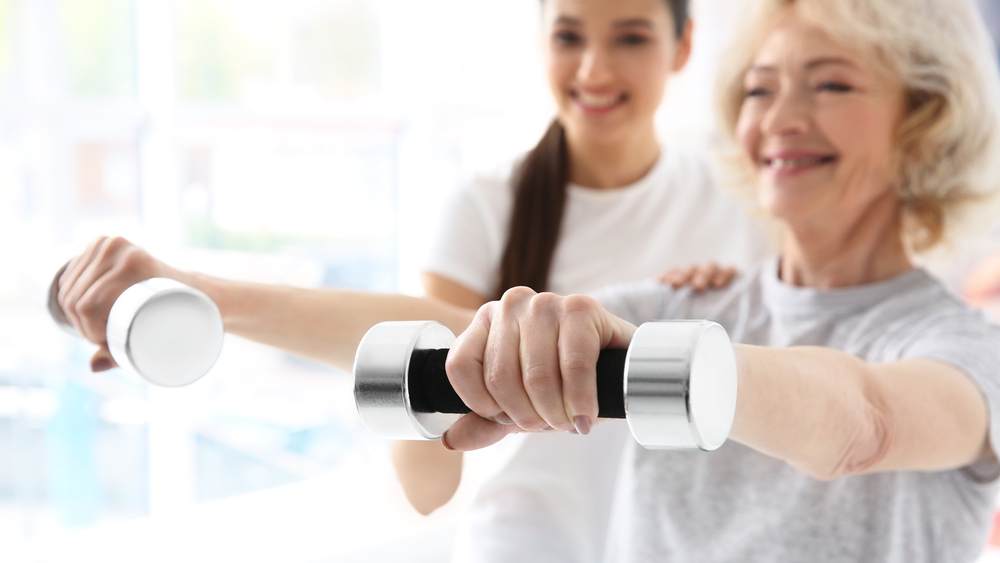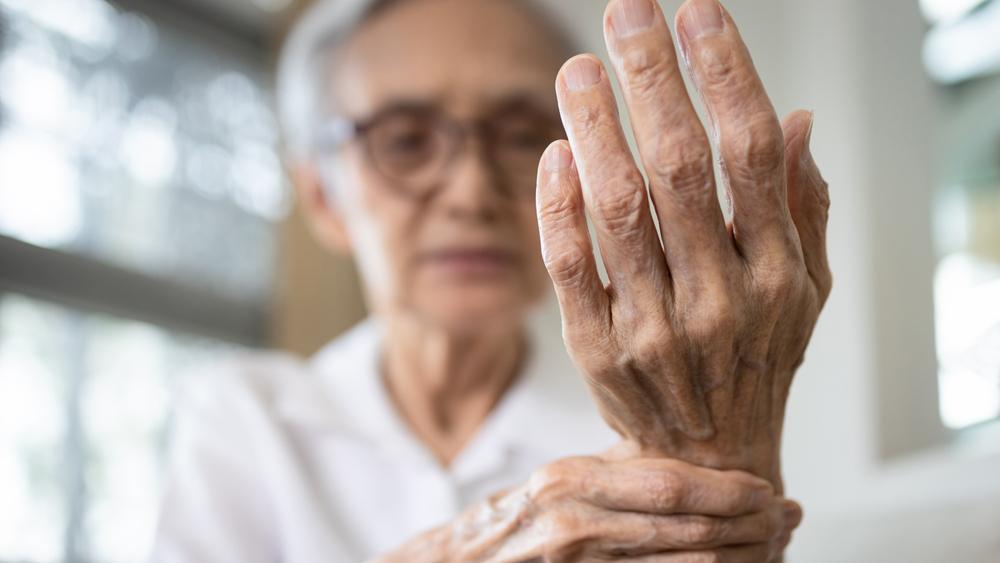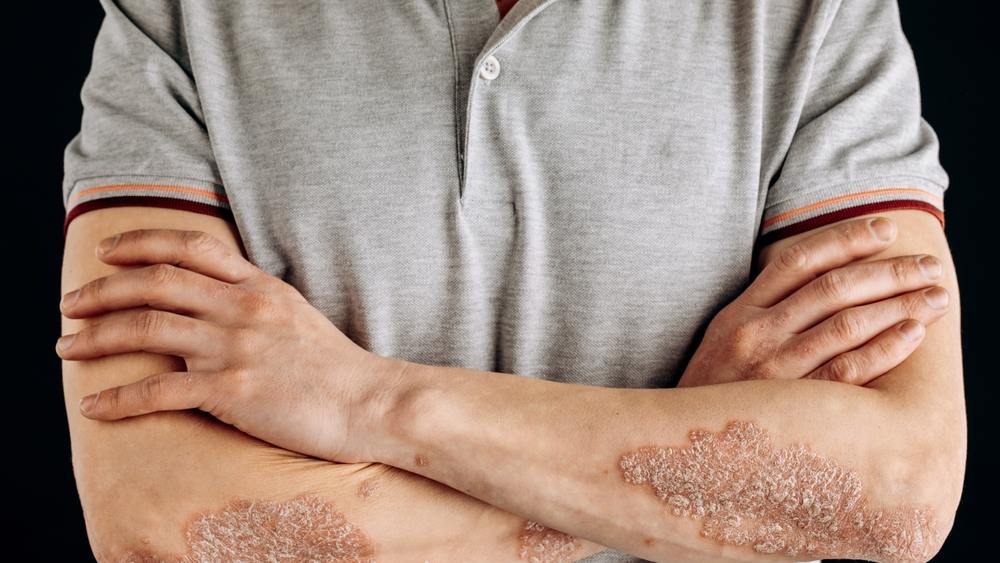 Arthritis can leave you feeling stiff, sore, and achy, making you much less enthusiastic about going about your daily routines or participating in activities you enjoy. Work with a physical therapist to manage your arthritis pain and other symptoms so you can go about your day with less discomfort. Physical therapy offers benefits for a wide range of health conditions by incorporating stretches, exercises, and other hands-on techniques to help increase your mobility and manage your symptoms. When you visit your Atlanta physical therapist for arthritis pain, you might be surprised at the effectiveness of this non-invasive treatment option. Many people associate physical therapy with something athletes do or something you might need to recover from surgery. While physical therapists do work with athletes and post-operative patients, they also provide people of all ages with a natural and engaging approach to reducing pain and improving mobility. Learn more about how you can take an active role in helping your arthritis when you go to an Atlanta physical therapy clinic near you.
Arthritis can leave you feeling stiff, sore, and achy, making you much less enthusiastic about going about your daily routines or participating in activities you enjoy. Work with a physical therapist to manage your arthritis pain and other symptoms so you can go about your day with less discomfort. Physical therapy offers benefits for a wide range of health conditions by incorporating stretches, exercises, and other hands-on techniques to help increase your mobility and manage your symptoms. When you visit your Atlanta physical therapist for arthritis pain, you might be surprised at the effectiveness of this non-invasive treatment option. Many people associate physical therapy with something athletes do or something you might need to recover from surgery. While physical therapists do work with athletes and post-operative patients, they also provide people of all ages with a natural and engaging approach to reducing pain and improving mobility. Learn more about how you can take an active role in helping your arthritis when you go to an Atlanta physical therapy clinic near you.
How Arthritis Can Affect You
 Arthritis causes inflammation of the joints. You can experience arthritis in one joint, or it can affect multiple joints in the body. The most common symptoms of arthritis include joint pain, stiffness, and swelling in the area. Arthritis symptoms tend to develop gradually over time and can cause uncomfortable symptoms that can negatively impact your quality of life. Here are five examples of common ways arthritis can affect you.
Arthritis causes inflammation of the joints. You can experience arthritis in one joint, or it can affect multiple joints in the body. The most common symptoms of arthritis include joint pain, stiffness, and swelling in the area. Arthritis symptoms tend to develop gradually over time and can cause uncomfortable symptoms that can negatively impact your quality of life. Here are five examples of common ways arthritis can affect you.
Chronic Joint Pain
Arthritis can lead to chronic joint pain. Depending on the type of arthritis you have, your pain may occur when the cartilage that supports your joints starts to wear down. The less cartilage available to support your joints, the higher the chances of bones rubbing against one another directly, which can cause severe pain. The body will respond with inflammation in the area, leading to swelling and increasing your pain and discomfort. Chronic joint pain can make everyday tasks uncomfortable or even become impossible. For example, arthritis in the wrist joint can make movements like gripping objects or typing at the computer painful and difficult.
Decreased Mobility
As arthritis worsens, you may experience decreased mobility. You may find it more difficult to participate in activities you used to enjoy because arthritis has started to limit your movements. Arthritis in the elbow joints can keep you from participating in sports like tennis or golf. Certain movements like going from sitting to standing or walking short distances can become difficult if you have arthritis in your back, hips, or knees. As the cartilage or lining of the joints starts to break down, it can limit your range of motion. The pain from a condition like arthritis and the body’s inflammatory response can also lead to decreased mobility.
Weakened Muscles
People who have arthritis may also experience muscle weakness, especially if they have rheumatoid arthritis. As arthritis starts to impact your physical functioning and range of motion, you may engage certain muscles less often than you used to. This can lead to overall muscle weakness in the area. As muscles become weak, they may not be able to support nearby joints as effectively as they used to, either. Your joints depend on strong, healthy muscles and other soft tissues like ligaments and tendons to provide stability and support. When you develop muscle weakness from arthritis from lack of use, you could end up with muscle atrophy or decreased muscle mass.
Numbness & Tingling
When inflammation and swelling occur due to arthritis, these symptoms can irritate or compress nearby nerves. A damaged or pinched nerve can cause an uncomfortable sensation called “pins and needles” that may last for long periods of time. Several major nerves that control various parts of the body are located in and around joints that may develop arthritis. For example, the median nerve runs through your wrist joint. Swelling and inflammation caused by arthritis in your wrist could put pressure on the median nerve, leading to tingling and numbness that extends into your hand and fingers.
Chronic Fatigue
Pain and swelling from arthritis can start to drain your energy, leaving you feeling tired more often than not. Chronic fatigue may occur as your muscles get tired faster or when the body’s inflammatory response interferes with healthy red blood cells in the body. When your everyday movements and activities are restricted due to the pain and discomfort of arthritis, you have to put in more effort to complete basic tasks, which can also leave you tired and fatigued.
3 Types of Arthritis
 Did you know that there are over 100 types of arthritis? When most people hear the term arthritis, they think of osteoarthritis, which is the most common type of arthritis. However, other types of arthritis can affect you and may cause a variation in your symptoms. Here are three types of arthritis and the common differences and distinctions between them.
Did you know that there are over 100 types of arthritis? When most people hear the term arthritis, they think of osteoarthritis, which is the most common type of arthritis. However, other types of arthritis can affect you and may cause a variation in your symptoms. Here are three types of arthritis and the common differences and distinctions between them.
Osteoarthritis
Osteoarthritis is the most common type of arthritis and occurs due to general wear and tear on your joints throughout your lifetime. This type of arthritis typically occurs in adults ages 50 or older and can cause a reduced range of motion that may go away once you start moving around for a bit. Osteoarthritis can also cause a clicking or popping sound when you bend or twist your joints in a certain way. You may develop bony growths in your fingers due to osteoarthritis. This type of arthritis can also make you more susceptible to instability in the affected joints.
Rheumatoid Arthritis
Rheumatoid arthritis is actually an auto-immune disease where the body’s immune system attacks the lining of the joints. The body’s typical immune response involves inflammation, and rheumatoid arthritis can lead to excessive inflammation and swelling around affected joints. People with rheumatoid arthritis will typically experience inflammation in multiple joints, and this condition will typically develop first in smaller joints like the hands and feet. You can also develop a low-grade fever and low red blood cell count due to rheumatoid arthritis.
Psoriatic Arthritis
Psoriatic arthritis is a type of arthritis that occurs with an auto-immune disease called psoriasis, which affects the skin and nails. People with psoriasis develop red scaly rashes called plaques that can occur anywhere on the skin, though it commonly occurs on the scalp, elbows, and knees. Many people with psoriasis will never develop psoriatic arthritis, but those who do will typically first notice stiffness when moving around in the mornings, lower back pain, chronic fatigue, and swelling in the hands and fingers. Unlike other types of arthritis, psoriatic arthritis can have flare-ups and periods of dormancy that may align with an increase or decrease in rashes caused by psoriasis.
Physical Therapy for Arthritis
No matter what type of arthritis you are dealing with, a physical therapist can help you find ways to relieve your discomfort naturally. While there is no cure for arthritis, PT for arthritis can reduce your symptoms and help you improve your quality of movement. Your doctor may recommend physical therapy for arthritis in addition to treatments like medications, supplements, and topical treatments. Your physical therapist will work with you to engage in safe and healthy movements that offer the following benefits.
Manage Symptoms
Physical therapy helps you manage common symptoms like pain, stiffness, and swelling. Arthritis pain may get worse with certain movements or activities, so your physical therapist will develop a physical therapy plan that helps reduce your pain. Stretches and exercises can also help reduce stiffness in joints affected by arthritis. Applying cold compresses can help reduce swelling and also reduce your pain and discomfort.
Regain Mobility
Work with a physical therapist to help regain mobility in and around the joints affected by arthritis. Inflammation can make certain movements uncomfortable or start to feel impossible. Physical therapy will help you regain the use of the affected joints safely and effectively with targeted treatment approaches like soft tissue mobilization and exercise regimens. Learn more about how to improve and regain your mobility when participating in stretches and exercises targeting the affected area.
Strengthen Muscles
Physical therapy encourages you to actively participate in your treatment plan by engaging in stretches and exercises that help strengthen muscles. If pain keeps you from doing certain movements or motions, the muscles you would typically use can start to weaken from lack of use. Strengthening your muscles will help you improve your range of motion and preserve your ability to perform important activities. Stretches and exercises at physical therapy will also help strengthen muscles everywhere, which helps improve your physical and mental well-being.
Support Joints
When you maintain a healthy fitness regimen with a physical therapist, your joints will become better supported by stronger, more flexible muscles and other soft tissues. Your joints rely on muscles, tendons, and ligaments for a full range of motion and healthy functioning, so treatments that target these areas will help support your joints. Your physical therapist can also talk to you about supporting your joints with braces or splints that can help take the stress off certain areas and reduce your pain and inflammation.
Visit AICA Orthopedics in Atlanta to get started with a physical therapist who can help you better manage your arthritis. Our team of physical therapists will walk you through stretches and exercises for arthritis included in a personalized treatment plan that addresses your specific type of arthritis and your symptoms. Don’t let arthritis pain keep you from living your best life!
